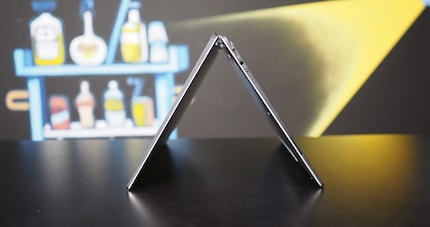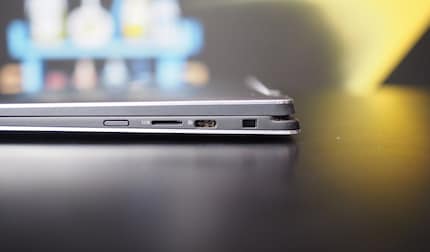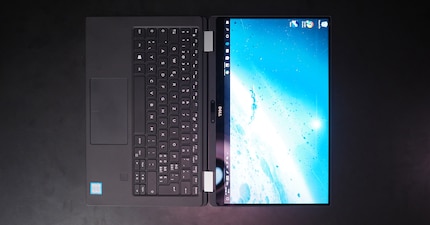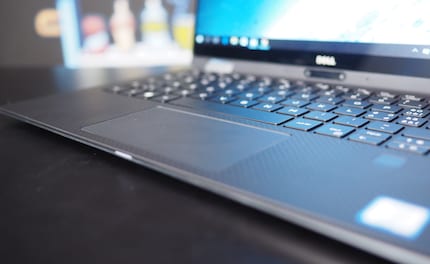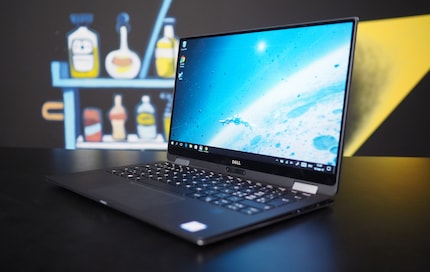
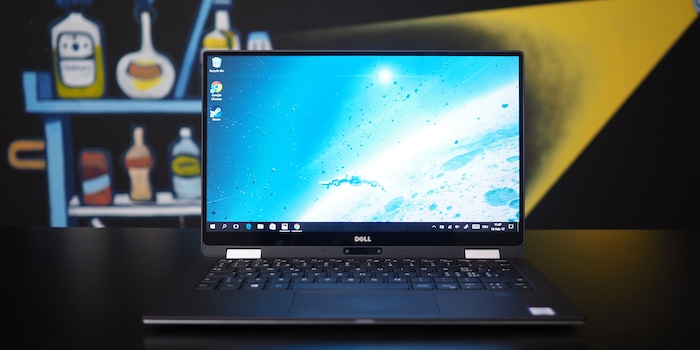
Dell XPS 13 2-in-1: One of the best notebooks becomes foldable
Dell hit the bull's eye last year with the XPS 13. Now the smart device is available in a revised form with a 360° rotatable display. Can it top its predecessor?
At first glance, little has changed. Anyone familiar with the XPS 13 notebook would hardly be able to distinguish the new 2-in-1 device at a cursory glance. But if you take a closer look, you will notice a few key differences. Nevertheless, Dell is primarily competing with the Lenovo Yoga 910 or the HP Spectre x360 as its own namesake.
Equipment, display and pre-installed software
The most striking change compared to last year's XPS 13 is the fully foldable display. Thanks to the 360° mechanism, the Dell can be transformed into a tablet in an instant. Unlike the Lenovo Yoga 910, which measures almost 14 inches, the XPS remains quite handy.
No fans are installed. The device is therefore completely silent. A feature not to be underestimated. However, you also only get an Intel mobile processor (i5 or i7). Although it can clock up to 3.2 or 3.6 GHz thanks to Turbo Boost, it does not maintain this performance for long due to the fanless design. This makes it a lot less powerful than notebooks with Intel processors, which still have a U at the end.
You can choose between 4 and 8 GB of RAM and between 128, 256 and 512 GB of SSD - depending on the model.
.
A few programmes from Dell and Microsoft Office are pre-installed, otherwise the device is pleasantly bloatware-free. That's how I like it.
The QHD+ display measures 13.3 inches and has a resolution of 3800x1200 pixels. Not quite 4K, but that's not really a topic given the size. The cheapest model only has a Full HD display. The QHD+ variant is razor-sharp and offers enough space to work on Windows. The colours could be a little richer, but overall I'm very happy with it. The almost borderless design does the rest.
Superficialities
Ports
Although there is no longer a USB-A port, the packaging includes an adapter cable for the two USB-C ports. Both also serve as a power connection. The SD card slot has given way to a micro SD slot. The headphone socket and Thunderbolt are still there. In my opinion, a completely superfluous button for an LED battery indicator is new. Yeiii 😑.
Performance and battery life
The battery is relatively long-lasting, not least because of the economical processor. However, it is clearly inferior to Lenovo and HP. However, the XPS easily lasts a normal working day and there is also the compact charger.
Keyboard, trackpad, touchscreen
The keyboard is a pleasant size for such a small device and there is nothing wrong with the typing feel. In contrast to the Lenovo Yoga 910, the right shift key is pleasantly wide and, more importantly, in the right place. On the other hand, the arrow keys are tiny and I often hit Page Down or Page Up. The umlaut keys also seem cramped. A bit tedious, but you can live with it.
The trackpad responds relatively reliably. Gestures work perfectly and the surface is well dimensioned. However, there are occasional input errors. I accidentally zoomed several times, even though I wanted to scroll normally. Or it reacted a little too slowly. Overall, however, it is easy to work with.
The touchscreen works reliably and with Dell's Active Pen (not included) you can even draw on it or practise your handwriting.
Conclusion: It doesn't work without compromises
If you prefer another manufacturer
You might also be interested in this
As a child, I wasn't allowed to have any consoles. It was only with the arrival of the family's 486 PC that the magical world of gaming opened up to me. Today, I'm overcompensating accordingly. Only a lack of time and money prevents me from trying out every game there is and decorating my shelf with rare retro consoles.
